Alex Hollings
Last year, Russian tanks flooded over the border into Ukraine, intent on reaching Kyiv and displacing the country’s democratically elected government. But, Ukraine proved to be made of tougher stuff than most would have predicted.
In the weeks that followed, Russia’s massive numerical advantage seemed to do little more than provide Ukrainian forces with a target-rich environment, which laid waste to tanks and other armored vehicles by the dozen using inexpensive shoulder-fired weapons and improvised explosive-laden drones, capturing many of those left intact.
The Center for Strategic and International Studies think tank reported that by the end of the first month of fighting, Russia had already lost a full quarter of its massive invasion force, including 274 tanks. By September, the tally of lost and captured Russian tanks reached 1,000 — more than all the tanks in the British, French, German, and Finnish militaries combined.
“The tank’s vulnerabilities—it is ill-suited to many types of terrain, inflexible in its movements, and the opposite of stealthy—have been known for years, but until this war they had not been exposed so clearly,” wrote Phillips Payson O’Brien, a professor of strategic studies at the University of St. Andrews in Scotland, for The Atlantic.
The glaring weakness of Russian armor against handheld anti-tank weapons provided by the West, like the American FGM-148 Javelin, was on full display for the world to see. So, many within the defense community and beyond found themselves wondering aloud… Could the era of tanks be over?
People have been saying the “era of tanks” has been over since the beginning
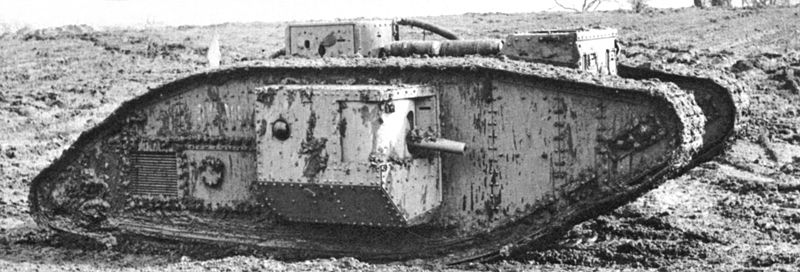 British Mark V tank in WWI (Wikimedia Commons)
British Mark V tank in WWI (Wikimedia Commons)This idea that tanks are hulking metal beasts left over from a bygone era with little practical use today is actually nothing new. In fact, it was a fairly common sentiment as far back as the 1920s, which you may note, was decades before some of the most legendary and pivotal tank battles in history would occur.
The first tanks used in combat were British, fielded during World War I in an attempt to foil the long and bloody stalemate that dominated the European continent. Thanks to the increased availability of things like the internal combustion engine and armor plating, tanks (which derived their name from the cover story for the factories building them under the guise of water-holding “tanks”) seemed perfectly suited for withstanding heavy enemy gunfire coming from their trenches. Of course… all new technology comes with problems, and those early tanks proved to be finicky beasts. The first time these British tanks found a fight, only 25 of the 49 of them actually moved when ordered to commence the attack.
These armored vehicles entered the conflict too late to play a pivotal role in its outcome, and many believed the entire concept of “tanks” would end right alongside the fighting.
“The tank proper was a freak,” one British commander wrote after World War I. “The circumstances which called it into existence were exceptional and not likely to recur.”
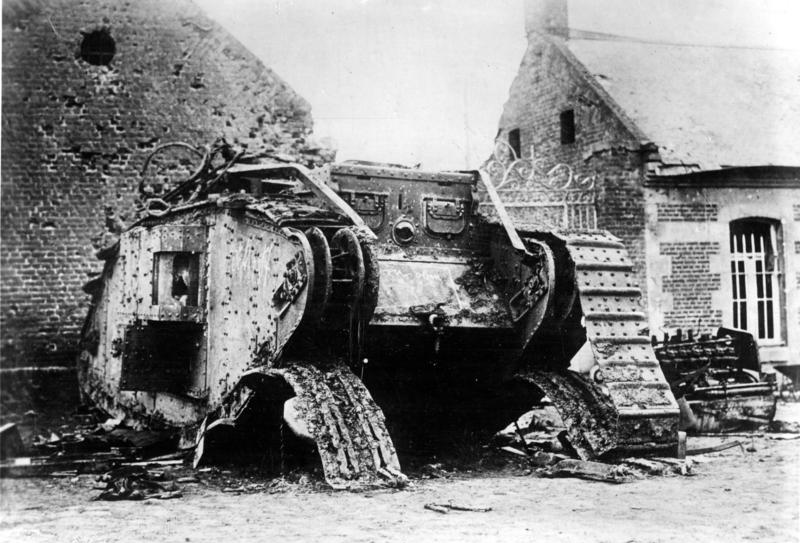 A British tank destroyed by German troops in WWI. (Wikimedia Commons)
A British tank destroyed by German troops in WWI. (Wikimedia Commons)Despite British experimentation with a tank force throughout the 1920s, the nation that invented these machines went on to disband its armored units entirely in 1928, declaring unequivocally that “tanks are no longer a menace.” In the decade that followed, artillery systems that leveraged shape charged for better penetration through armor emerged, seemingly turning heavy, slow-moving tanks into nothing more than expensive targets, and proving British suppositions correct.
In 1934, Britain’s Financial Secretary to the War Office, Duff Cooper, succinctly explained why tanks were already on the verge of total obsolesce.
“I am not in a position to give any information, but it is at least possible that in a few years’ time the most heavily armoured car or tank will be as vulnerable to the fire of the future as an old wooden caravan would be to the firing of to-day.”
But then, on September 1, 1939, German forces poured over the border into Poland with more than 2,500 tanks of varying sorts. By leveraging the speed and armor of their tank forces and integrating them into a combined arms strategy, Germany’s Blitzkrieg tactics allowed them to quickly route Polish defenses. Germany’s early successes in World War II, enabled to so small extent by their Panzer division, set the stage for the massive tank battles to come in the years ahead.
Nonetheless, before the conflict was over, Churchill himself would decide tanks had, once again, run their course, declaring, “we have too much armor — tanks are finished.”
As British military historian Basil Henry Liddell Hart wrote in 1960:
“Time after time during the past 40 years the highest defense authorities have announced that the tank is dead or dying. Each time it has risen from the grave to which they had consigned it — and they have been caught napping.”
Other military tech has seen similar debate
 USS Gerald R. Ford, America’s newest supercarrier (U.S. Navy photo by Mass Communication Specialist 2nd Class Jackson Adkins)
USS Gerald R. Ford, America’s newest supercarrier (U.S. Navy photo by Mass Communication Specialist 2nd Class Jackson Adkins)Tanks aren’t the only military technology to be constantly dismissed as old-fashioned. Aircraft carriers and heavy payload bombers, both of which continue to serve as cornerstones of American military might, have shared a similar ebb and flow of public support. Aircraft carriers emerged as among the most dominant warfighting assets a nation could field in the Second World War, but today, the advent of comparably cheap anti-ship missiles with four-digit ranges has many calling for America’s carrier fleet to get the ax. Likewise, heavy payload bombers, once seen as America’s primary form of nuclear deterrence, were largely discounted as old-fashioned once intercontinental ballistic missiles, or ICBMs started entering service in the 60s. Today, you’ll find folks arguing that fighters are a thing of the past because improved air defense systems can police airspace more effectively.
But like aircraft carriers. crewed bombers, and fighters, tanks not only remain in service, but continue to see substantial investment, both toward sustaining current models and toward developing newer, even more capable iterations. The hard truth, as many military planners see it, is simple: Losing platforms in a fight doesn’t mean those platforms are useless. That’s just the nature of a fight.
 From Left to Right: U.S. Air Force B-52, B-1B, and B-2 heavy payload bombers (U.S. Air Force photo)
From Left to Right: U.S. Air Force B-52, B-1B, and B-2 heavy payload bombers (U.S. Air Force photo)Rather than throwing tanks, aircraft carriers, bombers, and fighters out because new battlefield technologies have rounded off their pointiest edges, success in modern warfare is about finding new ways to leverage existing resources, and using combined arms tactics to mitigate weaknesses and offset disadvantages presented by different systems. The truth is, how military equipment and personnel work together tends to have a greater impact on combat efficacy than the capabilities of individual systems.
For their part, tanks have gone from slow, lumbering beasts designed to absorb small-arms fire in close-range combat to technologically advanced, fast-moving, and maneuverable command stations jam-packed with high-explosive hate that can be leveraged to great effect when coupled with a sound military doctrine and winning strategy.
And that is the real lesson we can glean from the performance of Russian tanks in Ukraine over the past year. The simple truth is, Russia has leveraged its tank forces very poorly, and Ukrainians armed with modern technologies like drones and low-cost missiles have punished them dearly for it.
The war in Ukraine doesn’t prove tanks are bad, it just proves Russia is bad at using them.
 Russian tank trapped after Ukrainians demolished a bridge in Kalynivka (Mykolaiv Oblast) on 2 March 2022 )(Wikimedia Commons)
Russian tank trapped after Ukrainians demolished a bridge in Kalynivka (Mykolaiv Oblast) on 2 March 2022 )(Wikimedia Commons)In an excellent piece for War on the Rocks, former Marine infantry officer and senior fellow in the Foreign Policy Research Institute’s Eurasia Program, Rob Lee, explains in superb detail how Russia’s heavy tank losses in Ukraine don’t accurately reflect the value these systems can have in combat. Instead, Lee posits, Russia’s heavy losses actually reflect what could fairly be described as the criminal negligence of Russian leadership.
As Lee explains, the poor performance of Russian tanks in Ukraine can be largely attributed to three key issues:A lack of warning and preparation within the Russian chain of command.
A poor strategy that exacerbated Russia’s existing logistical woes.
Insufficient infantry support to protect tanks in the fight.
“Because they expected little resistance, Russian forces made minimal attempts at executing a coherent combined-arms operation, which would have required careful coordination and planning between air, ground, and naval forces. Russian ground units simply drove toward cities, unprepared for a fight.”“The tank is not obsolete, and other observations about the future of combat” by Rob Lee for War on the Rocks
That lack of warning within the Russian ranks, and the preparation it would have allowed played a significant role in Russia’s heavy losses during the first few months of fighting. Many Russian troops, we’ve come to learn, didn’t know they’d actually be going to war until just hours before the invasion began, but more troubling still, it seems apparent that their immediate leaders were just as in the dark as their troops.
Poor logistics will kill armor faster than enemy missiles can
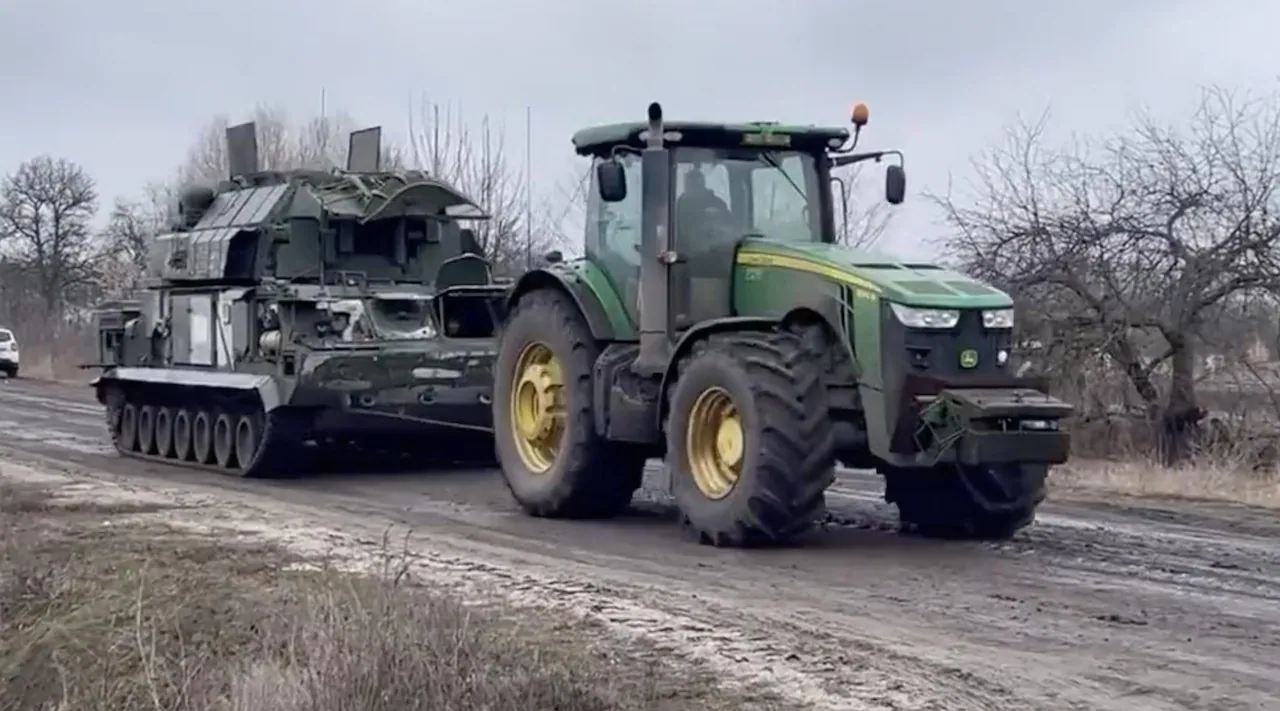 A Ukrainian tractor tows an abandoned Russian vehicle from the battlefield (RALee85/Twitter)
A Ukrainian tractor tows an abandoned Russian vehicle from the battlefield (RALee85/Twitter)During my time in the Marine Corps, I never worked with tanks, but before and after my years in uniform, I worked in racing — mostly for a company that ran both racing schools and a full-blown race series, called Skip Barber Racing. As a parts coordinator, it was my job to make sure our pit crews had all the parts they needed to quickly repair a car and get it back onto the track no matter what went wrong. It was a massive logistical undertaking even with permanent locations around the country and massive trailers dedicated specifically to carrying all the parts our mechanics might need.
And even with all of our combined years of experience, tens of millions of dollars worth of spare parts, drivers towing trailers around the nation at our request, and mechanics that could work miracles… every race was a panicked sprint to keep our cars running smoothly. Now imagine if we didn’t put together a plan ahead of time, opted to run the largest race series we’d seen in a half-century, and did it all weeks before any of our parts trucks could arrive at the track.
Then multiply the number of cars we were running by 1,000 or so and you’ll start to have a sense of just how poorly executed the Russian invasion of Ukraine really was.
As any tanker will tell you, operating tanks in a combat environment is a massive logistical undertaking that requires active supply lines and a constant flow of fuel and spare parts. Russia’s massive tank force includes a number of different platforms, including T-72 and T-90 variants with diesel engines and T-80 variants powered by gas turbines. This past summer, Russia began fielding even older T-62s as well, adding to the long list of parts and supplies needed to operate all of these different platforms, despite a high degree of commonality among some of them.
 There are multiple iterations of each of these tank classes in Russian service today (Images sourced from Wikimedia Commons)
There are multiple iterations of each of these tank classes in Russian service today (Images sourced from Wikimedia Commons)That lack of adequate warning to Russian tank commanders meant that many tank units moved into Ukraine without appropriate spare parts and supplies. Once the fighting began, this problem quickly spiraled into a disaster for the Russian forces.
This point becomes evident when you look at Russian tank losses recorded by the Oryx Blog between February and April 2022, when Russian tank losses were at their absolute worst. By the beginning of April, a whopping 53% of all tanks lost in combat weren’t destroyed by Javelin missiles or Bayraktar TB2 drones. No… they were simply abandoned after running out of gas.
By the beginning of September, Russia had seemingly gotten a grip on some of their logistical headaches, but it only stemmed the bleeding. Of the 994 Russian tanks lost to that point, 38% of them — more tanks than are owned by many entire nations — had simply been abandoned by Russian forces because of logistical or mechanical problems.
To make matters worse, Russian forces, seemingly expecting little resistance from Ukraine’s military, were ordered to advance well beyond the reach of their supply lines — a fact seemingly confirmed by the much higher abandonment losses of T-80U and T-80BVM tanks (59% and 56% respectively), which required a different type of fuel than the more common T-72s and T-90s.
The best tank armor is a well-trained infantry
 (Official USMC photo by Cpl. William J. Jackson/released)
(Official USMC photo by Cpl. William J. Jackson/released)By now, we’ve all seen footage of Russian tanks getting wiped off the map by Javelin missiles, popping their turrets like a Jack-in-the-box, and demonstrating just how effective infantry troops can be when armed with anti-tank weapons. And while Western (and yes, even Russian) tanks have a number of advanced systems meant to protect them from these sorts of attacks, the most effective kind of protection a tank can get against enemy infantry troops tends not to be more armor, but rather friendly infantry instead.
And this shines a light on yet another glaring Russian strategic failing — this time all the way up at the force structure level. I’ll spare you a summary of how Russian Battalion Tactical Groups are comprised, but Lester W Grau and Charles K Bartles have an excellent analysis of their intended function that was published by RUSI last April.
In theory, Russia’s force structure calls for brigades to be made up of roughly 3,500 troops, but in practice, Russia’s brigades are usually staffed at somewhere between 70 and 90%. With about 30% of that force made up of conscripts, it leaves only 1,700 or so well-trained professional warfighters in each 3,500-man brigade. This isn’t great, but it only gets worse from there. As Russia sought to increase the number of battalions despite a shrinking pool of enlisted service members, the size of units from the bottom up continued to shrink.
This causes all sorts of problems, but particularly for tanks, which are most vulnerable to infantry attacks while fighting in urban environments.
“Russia chose to reduce the strength of motorized rifle battalions on BMP Infantry Fighting Vehicles from 460 to 345 servicemen, and many of the battalions that invaded Ukraine were only at two-thirds to three-quarters strength. In practice, this meant that Russian motorized rifle units lacked sufficient dismounts for fighting in urban terrain.”“The tank is not obsolete, and other observations about the future of combat” by Rob Lee for War on the Rocks
This reduced infantry support for Russian tanks compounded existing issues with logistical shortfalls and poor planning to create a perfect hunting season for Russian tanks.
And, as an AirPower guy, I’d be remiss if I didn’t mention how Russia’s rapid advance not only drew their forces beyond the reach of their supply lines, but also beyond the protective umbrella of Russian airpower, leaving armored vehicles and their supporting troops vulnerable to attacks from the air, even in the form of low-cost drones.
How do you make tanks survivable in the 21st century?
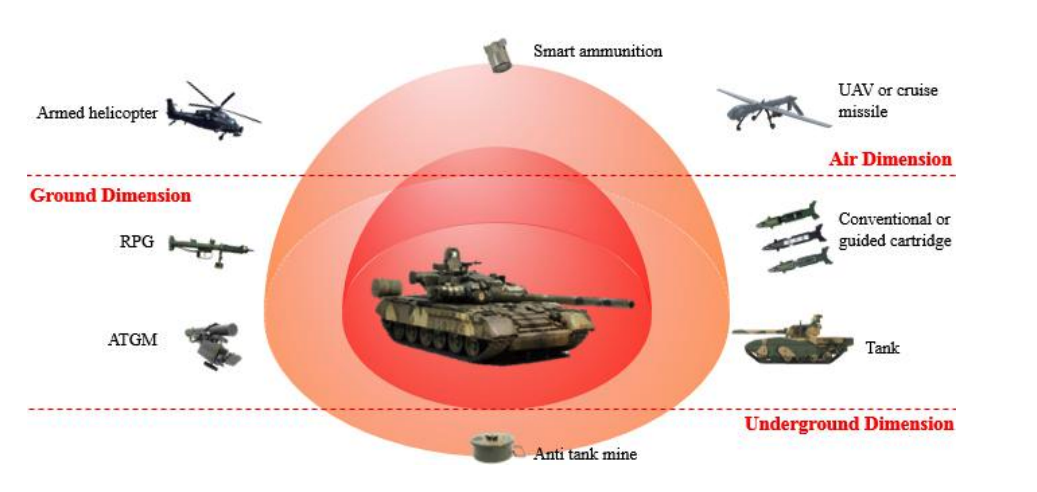 From “Analysis on the Development of Active Protection System for Tanks and Armored Vehicles” in the Journal of Physics
From “Analysis on the Development of Active Protection System for Tanks and Armored Vehicles” in the Journal of PhysicsThe fact of the matter is, tanks aren’t going anywhere, even in this era of data-fusing stealth fighters and AI-enabled drones.
“Everybody says war in the future is going to be fought only with drones, aircraft, missiles, submarines, satellites, and so on,” Nicholas Drummond, a former British Army officer and defense industry analyst told Vice. “But none of them can physically seize and hold ground.”
If anything, the war in Ukraine has demonstrated the immense value legacy systems can still have in the fight, as both Ukrainian and Russian forces have leaned heavily on artillery systems throughout the conflict. And that heavy use of artillery points to the continued value of armor on the battlefield as mutual support for infantry operations.
But in order to keep tanks relevant on the battlefield, they can’t be leveraged as a fighting force unto themselves, and instead, must be incorporated into a coherent combined-arms strategy that incorporates all elements of the warfighting apparatus. Tanks play their role by engaging other armored assets and protecting infantry, infantry plays its part by securing objectives and protecting the tanks from enemy infantry, kinetic and electronic air defense systems must play their part in intercepting inbound ballistic or cruise missiles as well as drones, while conventional airpower polices the airspace high above for inbound fighters, bombers, or attack aircraft.
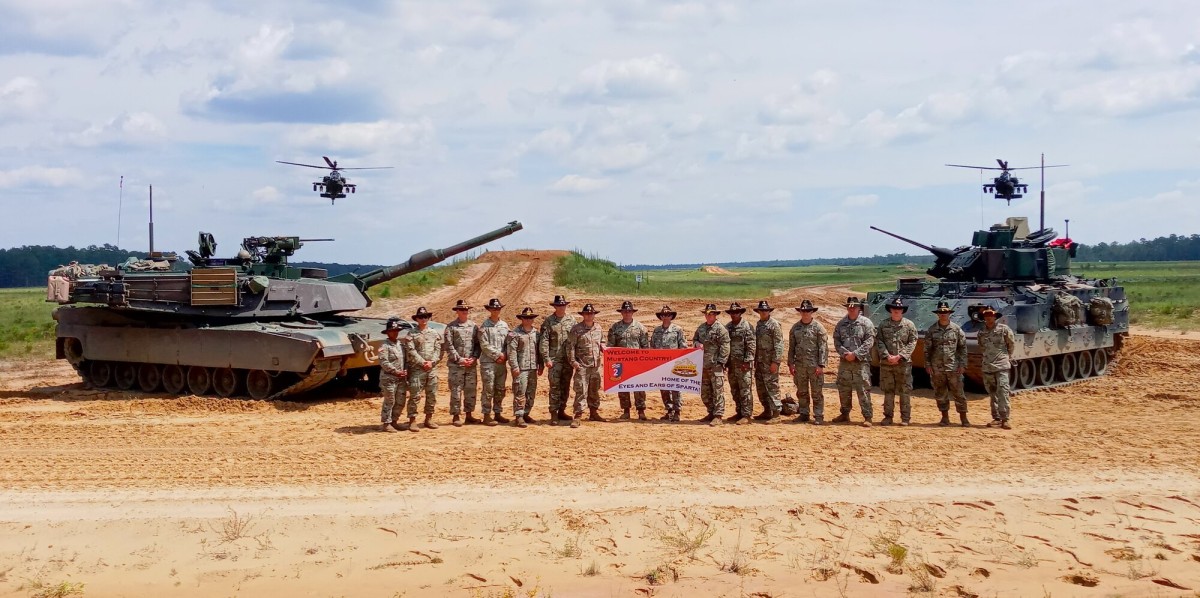 U.S. Army officers and senior noncommissioned officers, assigned to the “Mustang Squadron,” 6th Squadron, 8th Cavalry Regiment, 2nd Armored Brigade Combat Team, 3rd Infantry Division (U.S. Army photo by Pfc. Bernabe Lopez III, 50th Public Affairs Detachment)
U.S. Army officers and senior noncommissioned officers, assigned to the “Mustang Squadron,” 6th Squadron, 8th Cavalry Regiment, 2nd Armored Brigade Combat Team, 3rd Infantry Division (U.S. Army photo by Pfc. Bernabe Lopez III, 50th Public Affairs Detachment)Despite our habit of discussing these disparate elements of warfare in a vacuum, their real efficacy can only be found by combining them in an overlapping structure that creates a sum greater than the individual parts. If you can do that, then the tank will continue to play a pivotal role in combat operations for years to come.
And now, with hundreds of European and American tanks headed for Ukraine in the months to come, we may just see Ukraine put on a clinic on how tanks can be leveraged effectively on the modern battlefield.
And if that proves to be the case, concerns about the era of tanks being over that surfaced in the early months of this conflict will eventually find themselves on the shelf alongside all the other times experts were eager to dismiss their value.
No comments:
Post a Comment